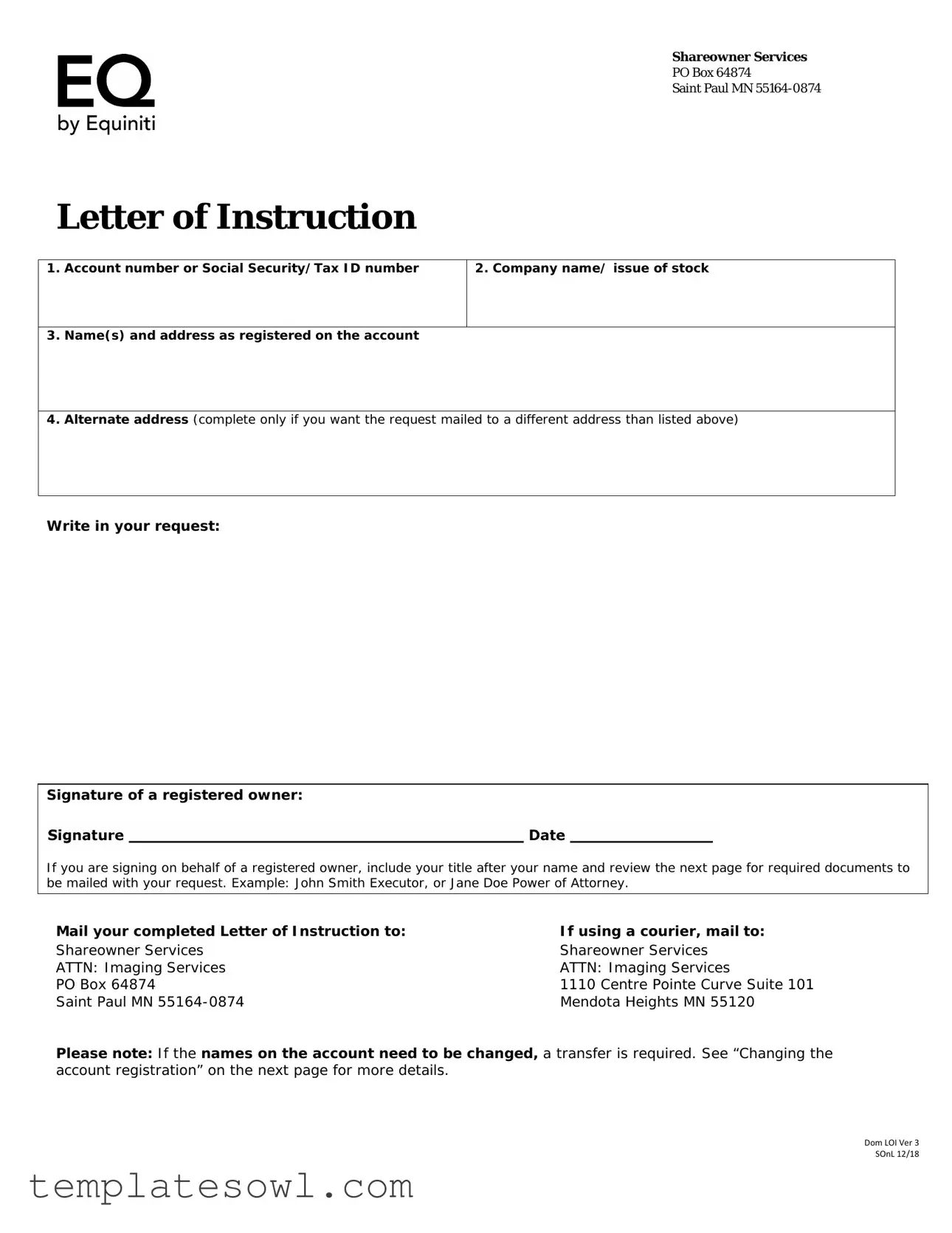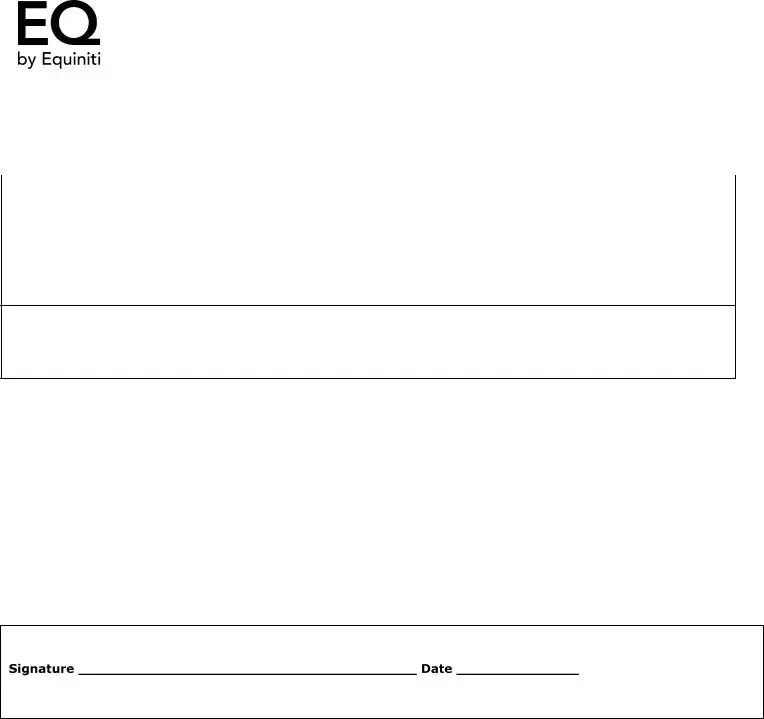What is a Letter of Instruction?
A Letter of Instruction is a formal document that provides specific instructions regarding an account, typically a shareowner account. It includes details such as the account number, company name, and the names and addresses of the registered owners. This letter is essential for initiating requests or making changes related to the account.
Who can sign the Letter of Instruction?
The Letter of Instruction can be signed by the registered owner of the account. If someone is signing on behalf of the registered owner, they must include their title as well. For instance, an executor or a power of attorney must indicate their role clearly. This ensures that the request is valid and could be processed accordingly.
How should I submit the Letter of Instruction?
You should mail the completed Letter of Instruction to the designated address provided. If you are using a courier, the address differs slightly and should be directed to the imaging services department. Be sure to double-check the recipient address to ensure timely processing of your request.
What should I do if I need to change the names on the account?
To change the names on the account, a transfer is required. It's not enough to simply submit a Letter of Instruction. You need to follow the processes outlined for changing account registration. You can download the necessary instructions and forms from the relevant website to proceed with the transfer.
What documentation is needed if I'm signing on behalf of someone else?
If you are signing on behalf of a shareowner, specific documents must be included based on your relationship to the owner. For example, if you are an executor, provide a court-certified document. Each situation, such as guardianship or power of attorney, has unique documentation requirements that you must fulfill to ensure the validity of your request.
Is there a deadline for submitting documents along with the Letter of Instruction?
Yes, certain documents must be certified and dated within specific timeframes. For example, documents related to guardianship must be dated within the last 60 days, while some documents from New York may be accepted if issued within the last six months. Failure to comply with these timeframes could delay or invalidate your request.


